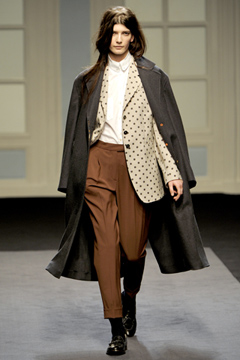Does Androgyny make more than just a Fashion Statement?
Androgyny is back for Autumn / Winter 2011, but this is hardly the first time that a masculine edge has hit back on both the street and the catwalk. So, why do women continue to return to an androgynous look?
Booms of androgyny are most prevalent in both the ’40s and the ’80s, and it continues to be a popular style choice this season after several consecutive years. We return, time and time again, to this empowering look, but the reasons for this aren’t so unexplained as may first appear on the surface. The correlation between androgynous fashion and political movements help to explain the prevalence of the look during the ’40s and the ’80s, but, in this day and age of gender equality, do women still require clothes to speak for them politically?
During the early ’40s and the Second World War, women became more empowered than ever, following the first wave of feminist politics, when they were required to take the jobs of men whilst the men were away at war. Women in men’s shirts appeared on British propaganda posters underneath the slogan “We Can Do It!”, and it was during this period that trousers for women didn’t only become widely accepted, but widely worn. Similarly, during the era of Thatcher in the ’80s, women suffered the highest rates of unemployment for decades. It was during this period that women reverted to the masculine edge of androgynous fashion in order to assert their power and their equality.
And perhaps these feminist booms explain the pervasive nature of androgyny on both the catwalk and the street in our current political climate. Recent statistics reveal that whilst one in five young people are currently unemployed, it is women across all age groups that suffer at the hands of unemployment.

Paul Smith is a strong believer in the empowering nature of tailoring, both angular and soft, and his Autumn / Winter 2011 certainly reflects this stance. The catwalks are crawling with all things masculine, including the unyielding come-back made by the flat brogue in this season’s collections by Fashion houses Chanel and Dolce & Gabanna.
Do we inevitably return to androgyny as a timeless and quirky look, or is there something deeper? Does androgyny make only a fashion statement, or a political one too?